If you keep livestock, you already know that each animal species has its own unique nutritional requirements, and these can change depending on the stage of life that the animal is in. Baby animals, too, and pigs are no exception. So… what do piglets actually eat?
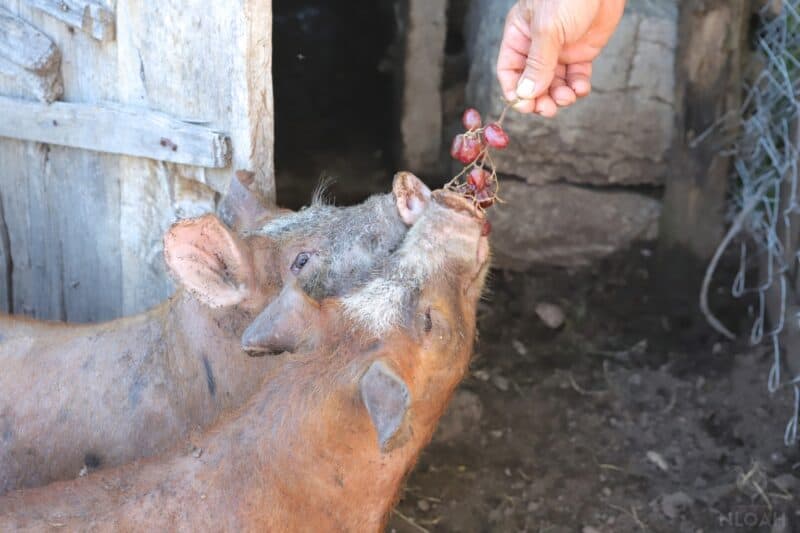
Piglets begin life subsisting solely on their mother’s milk, but should start creep feeding as early as a week or two. Piglets can eat a variety of starter and pre-starter feeds, feed replacer, and even whole foods after week 5.
It’s surprising to some folks that piglets really don’t stay on milk that long, and domestic pigs really shouldn’t if you want them to grow up as quickly and healthy as possible.
Keep in mind that the sow’s milk production declines greatly in just one month, meaning piglets should already be well on their way with a diet of solid food before that. I’ll tell you everything about the timing of feeding piglets in what follows…
Can You Bottle-Feed Piglets?
We know that piglets start out on their mother’s milk exclusively, but what happens if a piglet doesn’t get any? Rejection, death of the sow, and other complications might deprive it of this critical early-life resource.
Luckily, you can bottle-feed piglets. For the first week or two, piglets can be bottle-fed, and get all the nutrients young pigs need from milk replacer.
After that, you should transition them to solid foods and some probiotics, too, if you’re willing to spend the extra cash. Bottle-feeding piglets is sometimes needed, but it is a lot of work!
Is it Okay for Piglets to Drink Milk from a Bowl?
Yes, though they do not have an instinct for this behavior and must be taught if you want them to drink from a bowl when very young.
This is done somewhat roughly by dipping the piglet’s snout in the bowl forcibly and then releasing it.
After a few go around, they should understand and begin drinking normally. Later, once they are weaned, a larger bowl can be used with food that is softened so that the piglets can eat it easily.
Can Piglets Drink Cow’s Milk?
Cow’s milk is an adequate choice for piglets that, for whatever reason, cannot get access to a sow’s milk or milk replacer formula. That said, it’s not ideal since cow’s milk has a different nutrient profile and may not be as well digested by piglets.
Bottom line is, if you must use cow’s milk, do so sparingly – if you really don’t have a choice!
Is there a Milk Replacement Formula Just for Piglets?
Yes, there is. Pig milk replacer is a special formula used to feed piglets when they’re unable to nurse from their mother or the mother pig is not producing enough milk to meet their nutritional needs.
As you might expect, this replacer is specially designed to provide all the essential nutrients for healthy growth and development.
The composition of pig milk replacer is similar to sow’s milk, providing a balance of proteins, fats, carbohydrates, and essential vitamins and minerals. It can be bought from a local farm supply store and is typically sold in powder or liquid form.
To prepare pig milk replacer, the powder or liquid is mixed with water according to the instructions on the package.
It’s important to prepare the replacer correctly and serve it at the right temperature to avoid any digestive problems for the piglets.
Feeding pig milk replacer is usually only done when they cannot be raised by their mother, but it’s sometimes relied on for better control over the piglets themselves and their early life nutrition.
Remember that it’s best for piglets to nurse from their mother or a surrogate mother whenever possible, as this provides important antibodies and promotes bonding between mother and piglet.
When Should You Introduce Solid Food to Piglets?
Solids can be added to piglets’ diets pretty early in their life, sometimes as early as one week old, and in some rare cases when they’re older than 2 weeks.
This practice, known as creep feeding, is used to promote healthy growth and development in piglets. There are also special pre-weaning feeds or “creed feeds” that help with this goal.
Why Creep Feeding Piglets Is Important
Creep feed has several other important benefits for the piglet, its siblings, and even its mother…
First off, it can help to encourage early weaning, as piglets can start transitioning to solid food at a younger age. This can help to prevent stress on the mother pig and improve the overall health of the piglets.
It also provides them with the additional nutrients they need beyond what milk provides to promote healthy growth and development, allowing them to reach their full potential.
Another thing to consider is stress reduction: In larger litters, piglets may compete for milk and not get enough to eat.
Creep feeding can reduce competition by letting piglets access food on their own quicker. Some creep feeds also have additives that help to enhance a piglet’s immunity further, helping to reduce the risk of disease and infection they will certainly be exposed to as they join the herd.
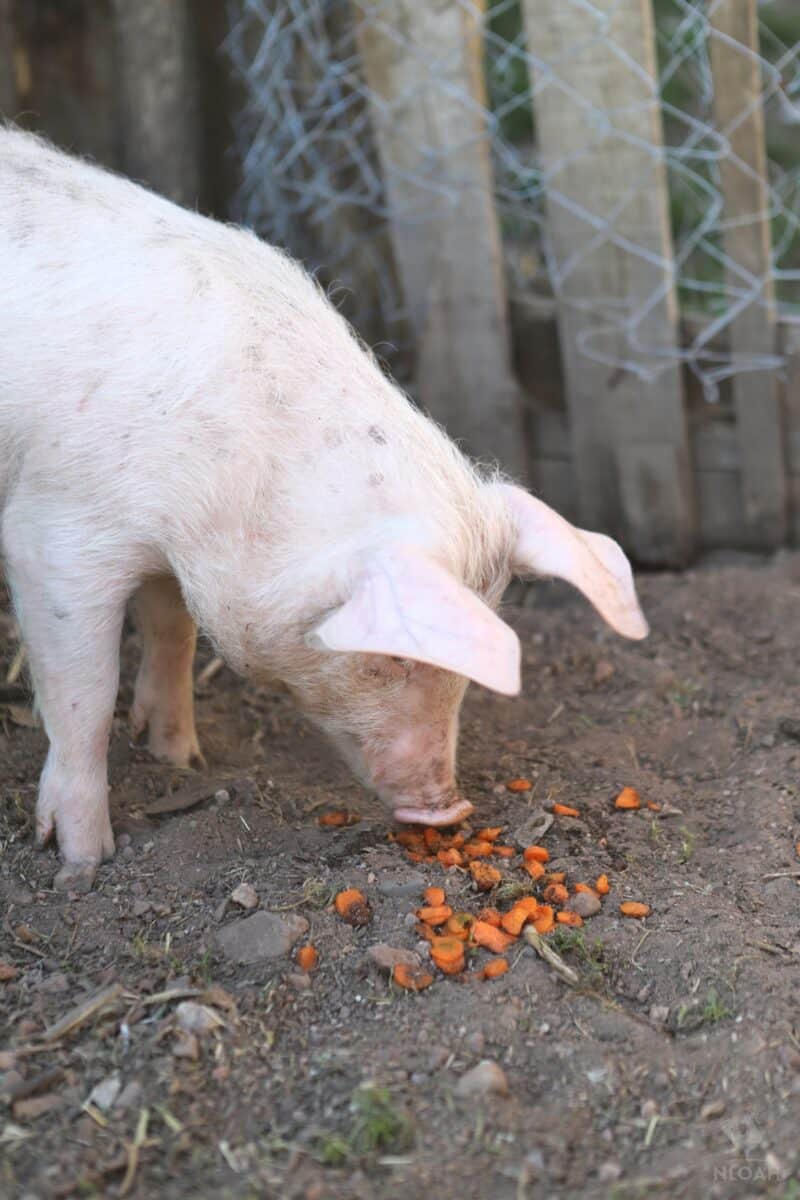
Do Piglets Need Starter Feed?
Yes, generally. Creep feed is typically followed by starter feed, or ration, at around 3 weeks old. Starter feed helps bridge the gap between creep feed and grower feed, providing additional nutrients and more calories that are needed to continue to develop.
This transition seems sudden, and it is: piglets grow very quickly and grow big, so they have intense nutrient and calorie needs even compared to other livestock!
Starter feed typically has a higher concentration of protein than other feeds, as well as essential vitamins and minerals that are necessary for healthy growth. The energy content in it may also be slightly higher than other feeds.
Also make a note that starter feed should be introduced gradually to ensure piglets are able to adjust and don’t experience any digestive upset.
Do They Need any Other Special Foods Early in Life?
Yes, piglets can benefit from both supplements and treats in their early life. Supplements are typically added to their regular feed or milk replacer to provide additional nutrients they may not be getting enough of. This can include things like vitamins, minerals, fatty acids, and amino acids.
Treats should also be offered as long as they are wholesome and healthy: piglets don’t need slop or any other junk foods.
Good options include fresh fruits and vegetables, as well as specially formulated treats that are designed for piglets.
These can help provide additional nutrition and also keep them engaged and entertained, helping to reduce boredom or stress.
Also, tasty, favorite foods will promote more eating in piglets, something to keep in mind to keep their nutrient intake high.
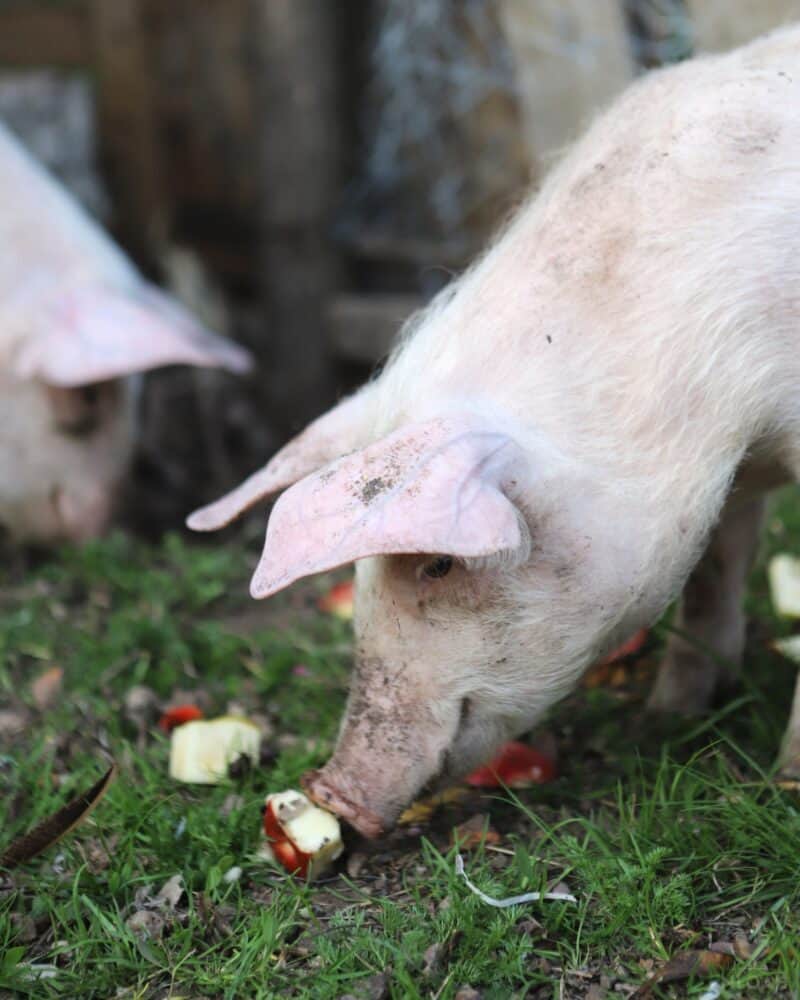
Can Piglets Have What We Have?
Yes, and quite a few. Pigs have a diverse diet, and they can eat many of the same things we humans eat. Still, remember that their digestive systems are different from ours and not all foods are appropriate for them.
Some foods we eat that can be good supplements or treats include:
- Fruits and veggies. Piglets can eat a variety of fruits and vegetables, including apples, carrots, pumpkins, sweet potatoes, and leafy greens. These are good sources of vitamins and minerals, and can help to keep them hydrated.
- Cooked eggs. Hard-boiled eggs are a good source of protein for piglets, and can be mashed and mixed with their regular feed.
- Whole grains. Grains like oats and barley can be mixed with piglet feed to provide additional nutrients and help keep them feeling full.
- Yogurt. Plain yogurt is a good source of probiotics, which can help improve digestion and boost immunity.
- Lean meat. Cooked, lean meats like chicken and turkey can be fed to piglets in small amounts as a source of protein.
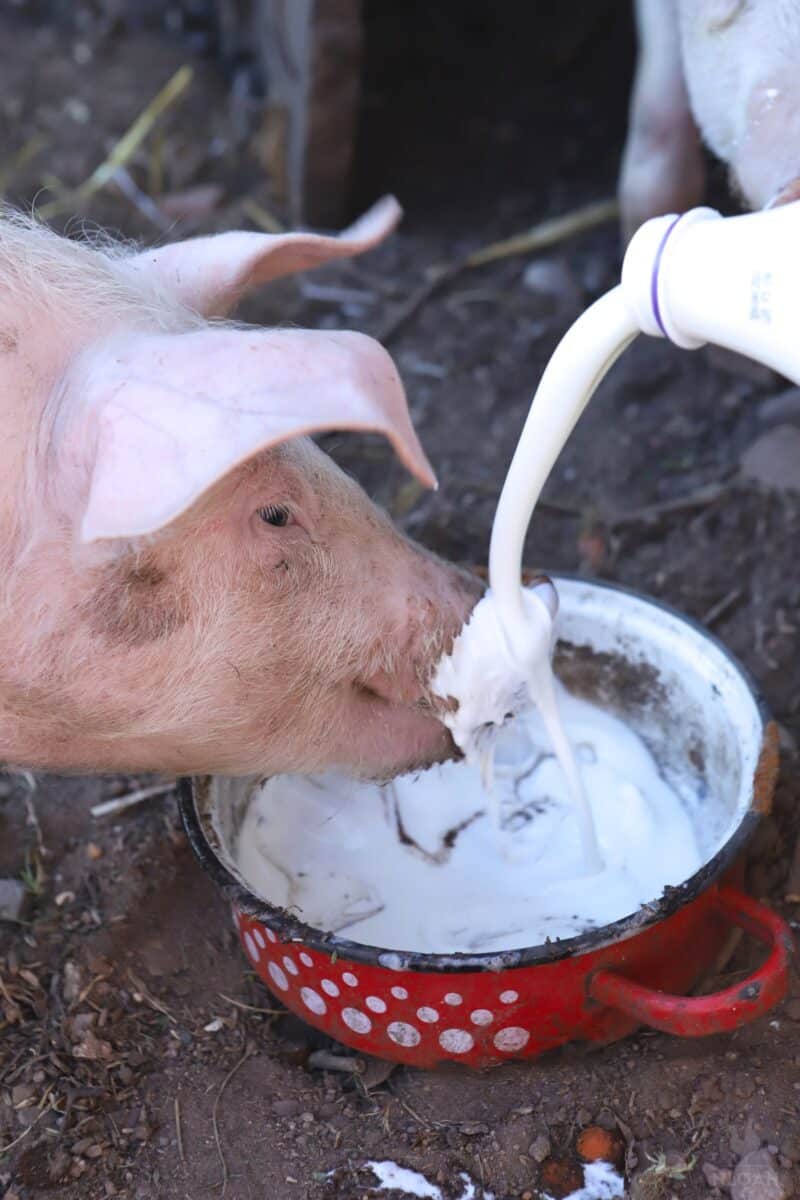
Piglets’ Diet in the First Weeks of Their Lives
What Does a 1-Week Old Piglet Eat?
Strictly mother’s milk, or an equivalent milk replacement. Piglets can’t digest solid food until theyțre roughly 2 weeks old, so it is important that these babies receive adequate nutrition from milk alone.
What Does a 2-Week Old Piglet Eat?
Creep feed and more milk, though milk intake should start tapering off.
What Does a 3-Week Old Piglet Eat?
High-protein starter ration, along with some milk. Starter ration provides the additional nutrition that piglets need to continue growing and developing properly.
What Does a 5-Week Old Piglet Eat?
Standard starter ration, last of the milk. Transition to typical feed and whole foods begins.
Overfeeding
Yes, it is possible to overfeed piglets. This is a tricky subject, because you must not only ensure nutritional and calorie targets are met, but you keep them from overeating at the same time.
This requires more engagement from you when it comes to feeding, and also keeping an eye on piglets that are weaker and unable to procure as much milk or food for themselves.
Keep in mind: even though the foods we give piglets have everything they need to grow up healthy, they can get too much of a good thing!
What Happens to Piglets that Overeat?
Overeating in piglets can lead to various health problems and negative effects on their overall growth and development.
If a piglet overeats, it can suffer from digestive problems, such as bloating, diarrhea, or constipation.
Overeating can lead to weight gain, which can increase the risk of health problems such as joint pain or respiratory difficulties.
Finally, overeating will definitely pave the way to generally weak piglets that are vulnerable to diseases, which can decrease their ability to fight off infections and illnesses.
To prevent overeating in piglets, stick to the typical feeding guidelines and give them a balanced diet that meets their calorie needs.
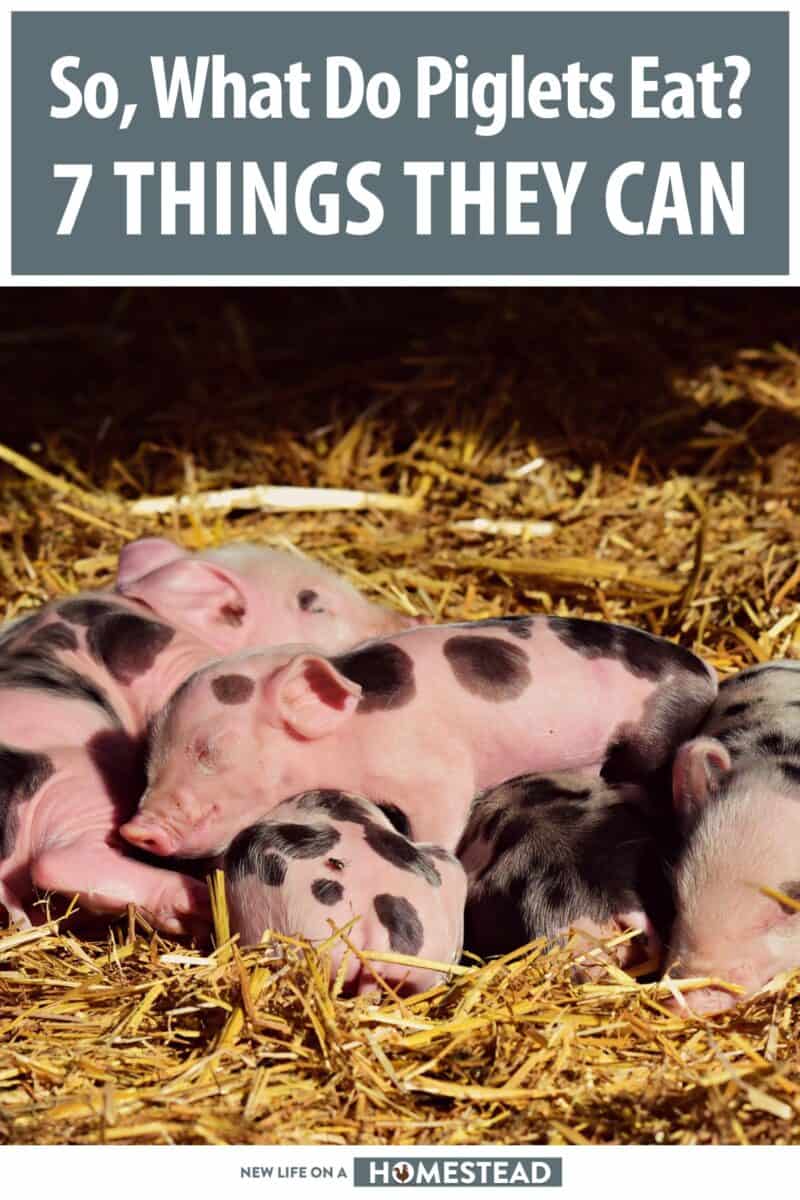
Tom has lived and worked on farms and homesteads from the Carolinas to Kentucky and beyond. He is passionate about helping people prepare for tough times by embracing lifestyles of self-sufficiency.
